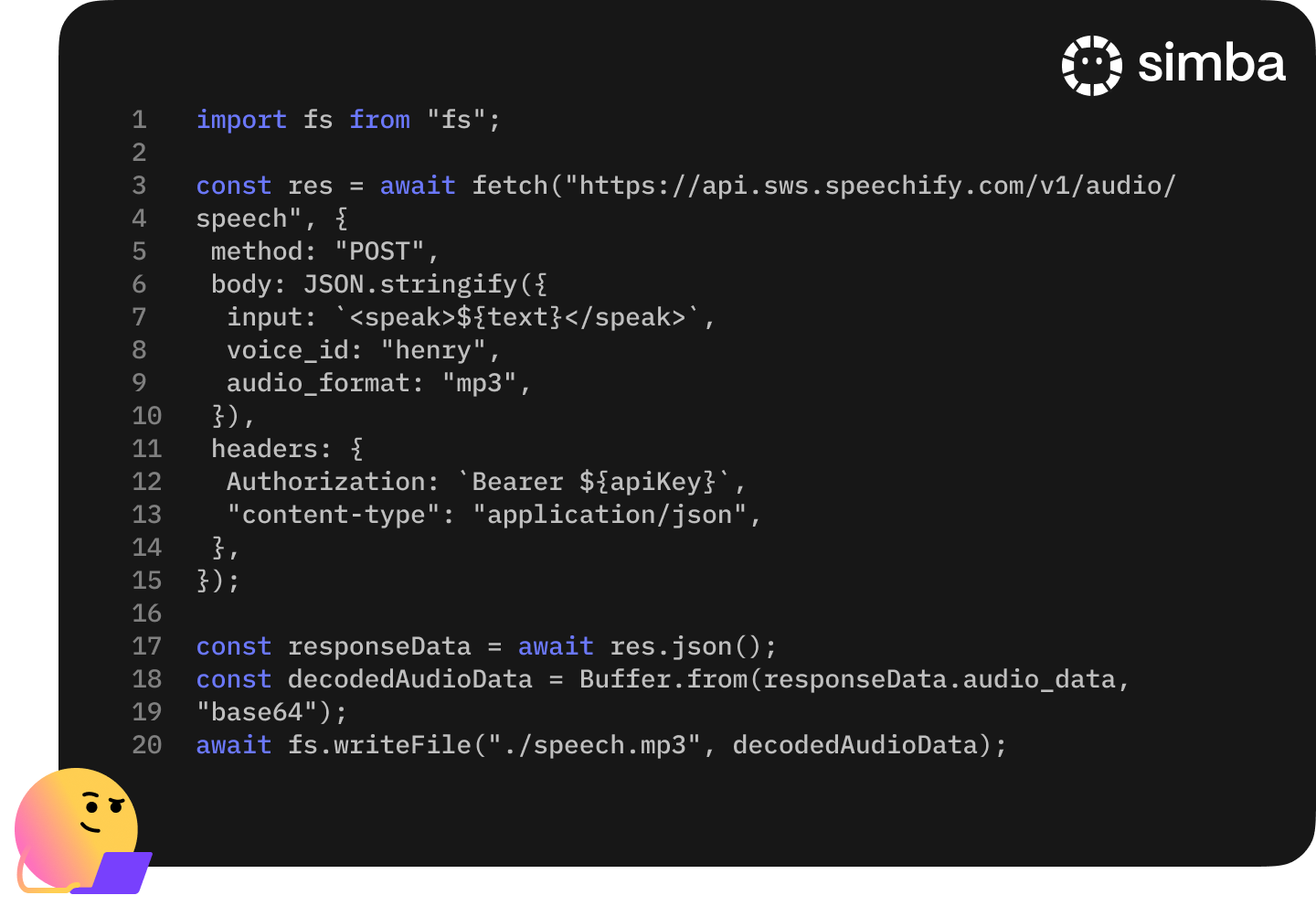I first heard about Speechify from my husband, who uses Speechify for all of his reading. I love using Speechify while driving, cooking, and going for a walk. I use it to listen to scripts for work and books for fun. I showed Speechify to all my girlfriends, and now they use it too.
Free Text to Speech Online in Seconds! No Sign-up Required.
Let Speechify read to you. Speechify is the most used text to speech platform in the world with 50M+ users. People use Speechify to turn any reading into audio with over 1,000 AI narrators across 60+ languages. Available for free on Chrome, iOS, Android, Mac, and Windows.
LISTEN ANYWHERE
Let Speechify read to you while you commute, exercise, and run errands. Breeze through PDFs, books, articles, emails — anything.
Let Speechify read to you while you walk to work, go for a run, or do laundry. Get through PDFs, books, articles, docs & emails twice as fast.
Convert text into natural-sounding voices and read up to 4.5x faster by listening with Speechify. Listen to Google Docs, emails, articles, and more seamlessly.
The fastest way to read any PDF, book, or doc and make it stick. Integrates with Google Drive, Dropbox, Canvas & more.
Use Speechify from your Dock to read PDFs, Word docs, emails & more. Listen and read at the same time to read faster and retain more.
1,000+ LIFELIKE AI VOICES
Enjoy over 1,000 natural, multilingual, lifelike text to speech AI voices across 60+ languages, including English, Spanish, French, German, Portuguese, Japanese, Korean, and many more. TTS is perfect for listening to Google Docs, news articles, emails, books, fan fiction, PDFs, websites – anything.



.png?quality=95&width=750)
1,000+ Human Voices
Enjoy over 1,000 natural, lifelike voices across 60+ languages or create a custom reading voice.
Read 4.5x Faster
Our users save up to 9hrs a week by using Speechify to speed read.
Instant AI Summaries
We summarize every reading so you get the takeaways right away.
Scan & Listen
Experience the convenience of OCR functionality with Speechify. Simply snap a picture using the app to scan written text and listen to any content read aloud in high-quality, natural-sounding voices.
Introducing Our Text To Speech API
We're sharing an AI Voice API that delivers Speechify's most natural and beloved AI voices directly with developers


Sir Richard Branson, Business MagnateSpeechify is absolutely brilliant. Growing up with dyslexia this would have made a big difference. I’m so glad to have it today.

Gwyneth Paltrow, Actress and BusinesswomanSpeechify makes it easy to learn at 2x or even 3x the speed you read with your eyes.
.png?quality=95&width=750)
Ali Abdaal, most followed Productivity Expert in the world.If there’s one hill I’m going to die on, it’s that speed listening is the best way forward. Speechify is a game-changer for me.
FAQ
Text to speech, sometimes called TTS, read aloud, or speech synthesis, is the term for using AI voices to turn any input text into speech.
An AI voice refers to the synthesized or generated speech produced by artificial intelligence systems, enabling machines to communicate with human-like speech.
Speechify is available via its iOS or Android mobile apps, its web app on Windows or Mac, or its extensions for Chrome and Microsoft Edge.
Speechify is for everyone, including seniors, students, professionals, and anyone who benefits from listening to written content.
Yes. Speechify’s text to speech has the most natural, human-sounding voice overs available on the market. The voices are now indistinguishable from human voices and available in several different languages including Spanish, Portuguese, German, French, and more.
Voice cloning allows you to upload or record a few seconds of any speaker, with the speaker’s permission, and generate a clone of the voice. This allows you to listen to any email, PDF, or website in the new cloned voice.
Yes, we do! Please create an account to get started. You can also review our extensive documentation. This is the same API that currently powers all of our products, providing the highest quality AI speech on the market to tens of millions of users. This API includes instant voice cloning, language support, streaming, SSML and emotional controllability, speech marks, and much more.
Yes! If you would like to purchase text to speech plans in bulk, please contact our sales team for schools or teams. We work with large school districts and governments around the world to provide students with access to Speechify at scale. Speechify helps make education more accessible and improves student outcomes.





